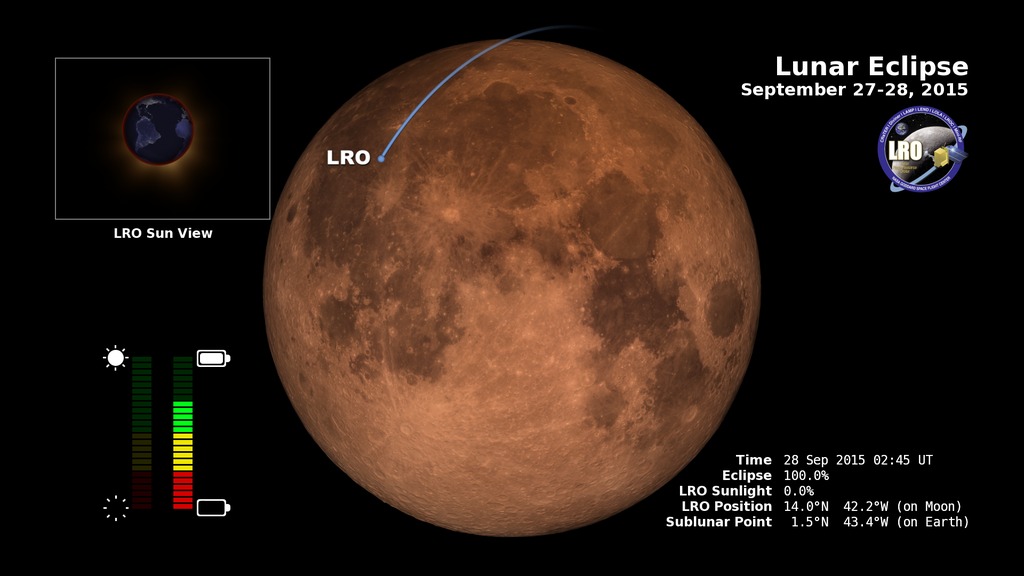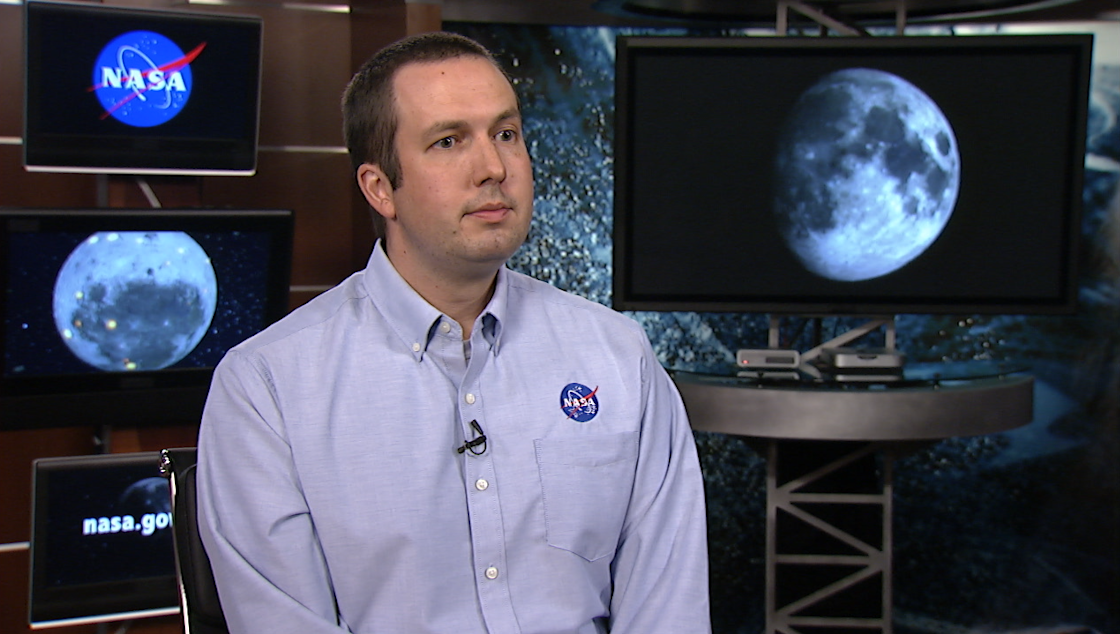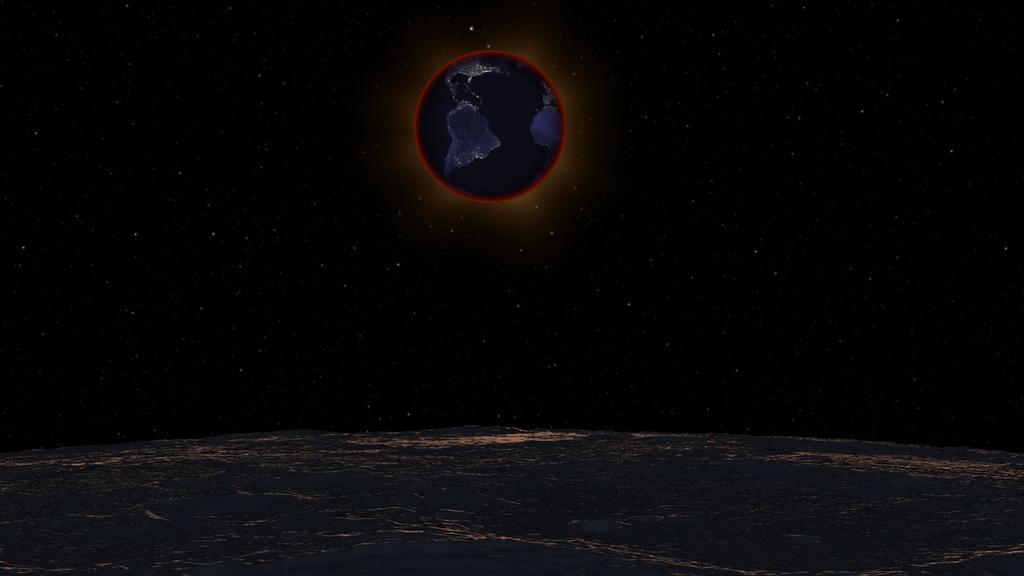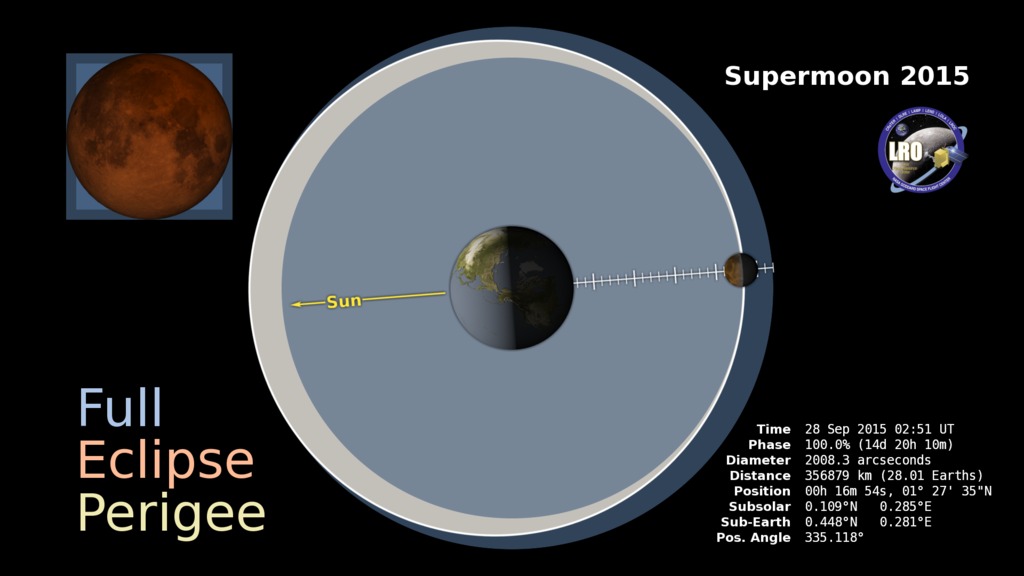September 27, 2015 Total Lunar Eclipse: Shadow View
Universal Time (UT). The Moon moves right to left, passing through the penumbra and umbra, leaving in its wake an eclipse diagram with the times at various stages of the eclipse.
On the evening of September 27, 2015 in the Americas (early morning on September 28 in Europe and most of Africa), the Moon enters the Earth’s shadow, creating a total lunar eclipse, the last of four visible in the Western Hemisphere in a span of 18 months. This animation shows the changing appearance of the Moon as it travels into and out of the Earth’s shadow, along with the times at various stages. Versions of the animation have been created for each of the four time zones of the contiguous United States, as well as one for Universal Time.
All of South America and most of North and Central America will see the entire eclipse, while those west of roughly 120°W will see it in progress at moonrise. You won’t need special equipment to see it. Just go outside and look up!
The penumbra is the part of the Earth’s shadow where the Sun is only partially covered by the Earth. The umbra is where the Sun is completely hidden. The Moon's appearance isn't affected much by the penumbra. The real action begins when the Moon starts to disappear as it enters the umbra at about 9:07 Eastern Daylight Time. An hour later, entirely within the umbra, the Moon is a ghostly copper color, and this lasts for over an hour before the Moon begins to emerge from the central shadow.
The view in these animations is geocentric. Because of parallax, the Moon's position against the background stars will look a bit different for observers at different locations on the surface of the Earth. The Moon is in the southwestern part of the constellation Pisces.
Eastern Daylight Time (EDT). The Moon moves right to left, passing through the penumbra and umbra, leaving in its wake an eclipse diagram with the times at various stages of the eclipse.
Central Daylight Time (CDT). The Moon moves right to left, passing through the penumbra and umbra, leaving in its wake an eclipse diagram with the times at various stages of the eclipse.
Mountain Daylight Time (MDT). The Moon moves right to left, passing through the penumbra and umbra, leaving in its wake an eclipse diagram with the times at various stages of the eclipse.
Pacific Daylight Time (PDT). The Moon moves right to left, passing through the penumbra and umbra, leaving in its wake an eclipse diagram with the times at various stages of the eclipse.
The Moon moves right to left, passing through the penumbra and umbra, at 10 seconds per frame. Frames include an alpha channel.
The star field that appears behind the Moon during the eclipse. The Moon is in Pisces. Because of the narrow field of view, no easily recognized stars are visible here. The brightest star, HR 67 (or HIP 1421), is magnitude 6.2, visible only to the keenest eyes in an especially dark location.
For More Information
Credits
Please give credit for this item to:
NASA's Scientific Visualization Studio
-
Visualizer
- Ernie Wright (USRA)
-
Producers
- David Ladd (USRA)
- Michelle Handleman (USRA)
-
Scientists
- John Keller (NASA/GSFC)
- Noah Petro (NASA/GSFC)
Release date
This page was originally published on Tuesday, August 18, 2015.
This page was last updated on Tuesday, November 14, 2023 at 12:06 AM EST.
Missions
This visualization is related to the following missions:Series
This visualization can be found in the following series:Datasets used in this visualization
-
DEM (Digital Elevation Map) [LRO: LOLA]
ID: 653 -
DE421 (JPL DE421)
ID: 752Planetary ephemerides
This dataset can be found at: http://ssd.jpl.nasa.gov/?ephemerides#planets
See all pages that use this dataset -
WAC 643nm High Sun Global Mosaic [LRO: LROC]
ID: 803
Note: While we identify the data sets used in these visualizations, we do not store any further details, nor the data sets themselves on our site.




